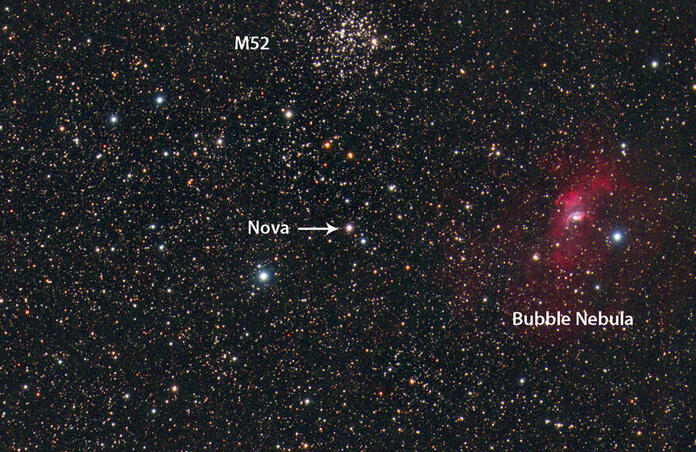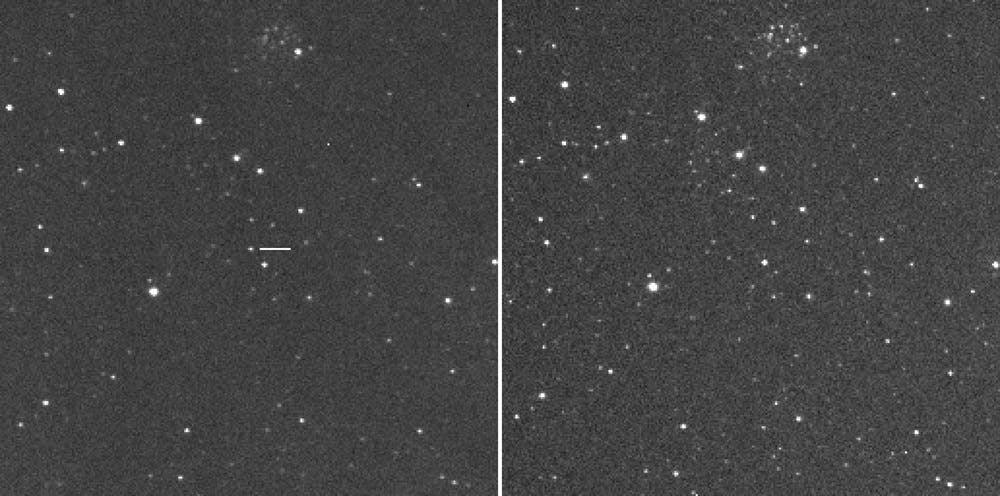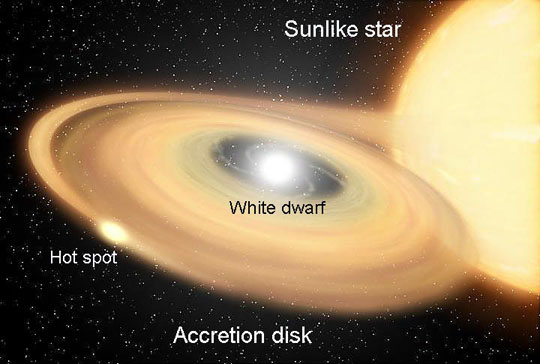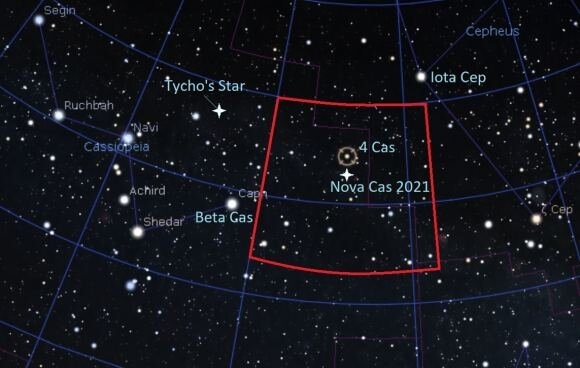The Bright Nova In Cassiopeia You Need To See

On the 18th March, Japanese amateur astronomer Yuji Nakamura imaged a new luminous object in the constellation of Cassiopeia, which turns out to be a nova.

which isn't present on the earlier image on the right
A nova occurs when a white dwarf in a binary system accretes enough hydrogen from its companion for it to start nuclear fusion. This might sound very similar to what occurs in Type Ia supernovae; however, here the runaway processes occur at the surface of the white dwarf, not in the core. Only a small fraction of the star’s mass then gets ejected, leaving behind the white dwarf. It is possible for that sort of white dwarf to experience multiple novae before reaching a mass superior to the Chandrasekhar limit, then finally exploding as a Type Ia supernova. Just like supernovae or planetary nebulae, a nova leaves behind a remnant shell of matter. Those are much less massive and energetic though, thus fading more rapidly.

A puzzle for astrophysicists regards the fading of the nova itself, as they are classified according to their light curves: it is very difficult to establish beforehand when a nova reaches its peak luminosity and how long it will take for it to return to its initial luminosity. It is estimated that about 50 novae occur yearly in the Milky Way, yet visible ones are rather rare, again due to the low energies involved and the relatively short timescales. The new nova in Cassiopeia V1405 Cas is still in its brightening phase – its peak magnitude will help establish its distance and confirm which system it originated from, likely to be CzeV3217. With an apparent magnitude of 9.4 at the time of its discovery, V1405 Cas is for now at about 7.5, slightly under the magnitude of 6 required to see a celestial object with the naked eye; still, this means it is visible with a good pair of binoculars or a small telescope.
To locate the nova, the constellation of Cassiopeia can easily be recognized by its “W” shape; other close targets to the nova include the open cluster M52 and the Bubble nebula NGC 7635, an H II region (V1405 Cas’ precise coordinates are: right ascension 23h 24m 48s, declination +61° 11′ 15″). Note that Cassiopeia is circumpolar from Northern latitudes, i.e. it is visible every night of the year because it never sets below the horizon. With Telescope Live telescopes, it would be best to use one of the SPA telescopes shortly after dusk or a bit before dawn, when the constellation is highest up in the sky (8.30 – 9 pm / 5 – 6 am).
Another exciting prospect from this discovery is the rapid collaboration between an amateur astronomer and researchers, in this case those at the National Astronomical Observatory of Japan (NAOJ), who confirmed the discovery the night it was reported to them. In the same way, it is possible to report observations of a star’s brightness changes to the American Association of Variable Star Observers (AAVSO). So, keep observing and maybe you’ll notice a new or recurring variable star too!
Cover image: Nova Cassiopeia 2021 Comparison - 16th / 21st March 2021, M. McIntyre
Image credits:
1 - V1405 Cas, Yuji Nakamura
2 - Nova accretion illustration, NASA / CXC / M. Weiss
3 - Nova location, Dave Dickinson/Stellarium
4 - Nova image, Dennis di Cicco / Sean Walker MDW Sky Survey


